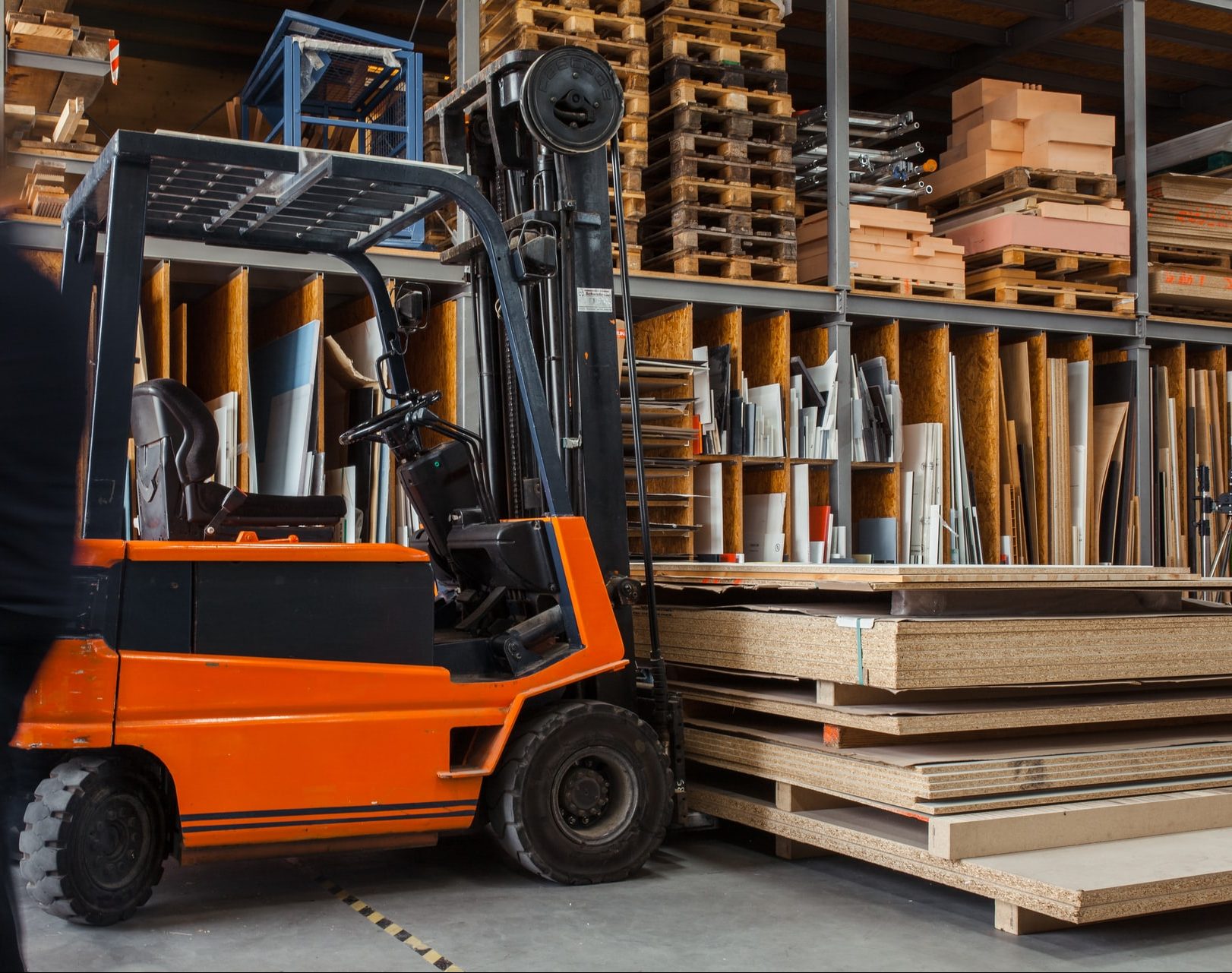What is a Counterbalance Forklift?
A Counterbalance Forklift is a specific type of powered industrial truck, predominantly used for moving and lifting heavy loads in a variety of environments. The name “counterbalance” comes from the design of the forklift itself; a counterweight is strategically positioned at the rear end of the vehicle, which functions to balance out the weight of the load being carried at the front.

A counterbalance forklift truck in action
key features of Counterbalance Forklifts:
- Design: These forklifts are identifiable by their two forks at the front end, which enable them to drive directly up to a load, lift it, and then transport it. Another notable design feature is the three-point suspension system that effectively distributes the overall weight of the vehicle.
- Operation: The working mechanism of a counterbalance forklift can be likened to a seesaw. It includes a fulcrum (the front axle), a counterweight at the rear, and the load on the forks, all of which contribute to creating a balanced system.
- Types: There are various types of counterbalance forklifts available, with power sources ranging from diesel to electric. Electric counterbalance forklifts are particularly designed for a wide range of material handling tasks.
- Durability: Some models of counterbalance trucks are built with durability in mind, engineered to function for extended periods between service intervals, in some cases up to 500 hours.
- Versatility: Counterbalance forklifts are highly versatile machines, capable of performing a wide array of tasks. They can safely lift a broad spectrum of weights, making them indispensable in many industrial environments.